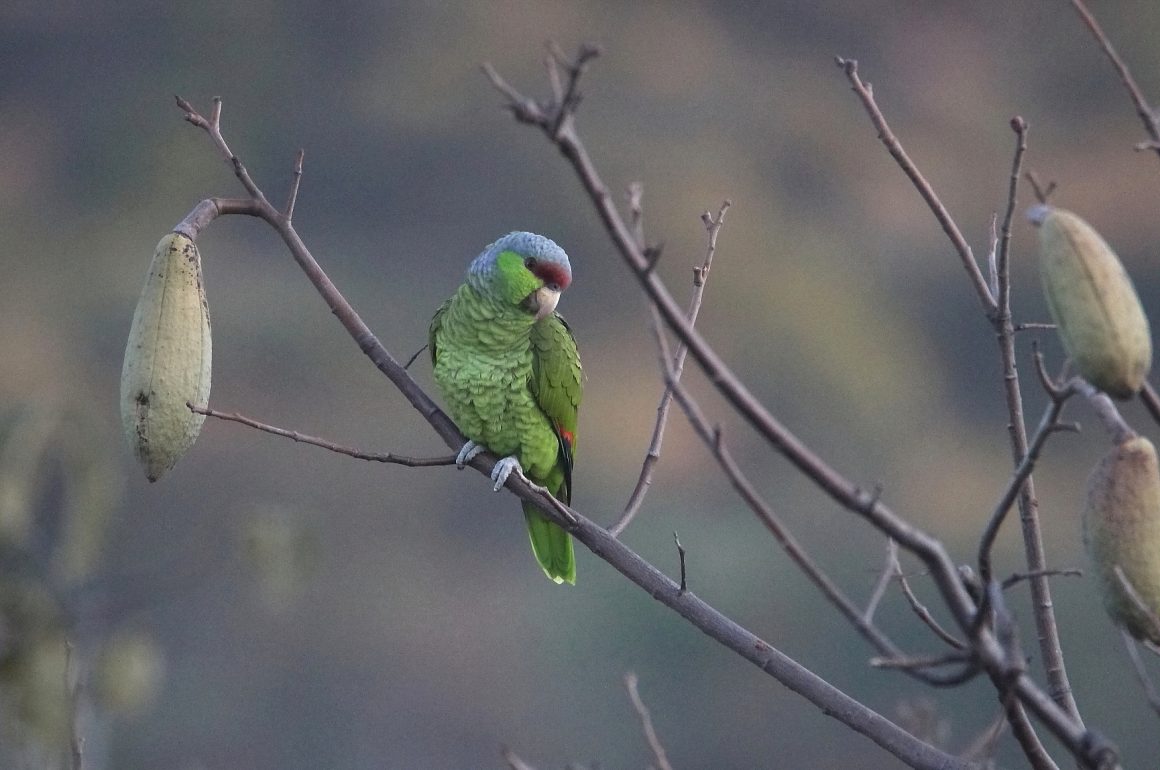
Early this week, I took a birding guide and his wife from Cancún to my favorite site for Michoacán’s Hot Country endemics. But the fun began before we ever got down to the 1,000 m elevation of this site. As we drove through the municipal seat of Tzitzio, at around 1,500 m, my guests shouted “Parrots!”. I quickly pulled over, and right there in the middle of the town, we spent some ten minutes watching a group of at least four beautiful Lilac-crowned Amazons work their way over a native Silk Floss Tree. Many photos were taken, and joy was experienced.
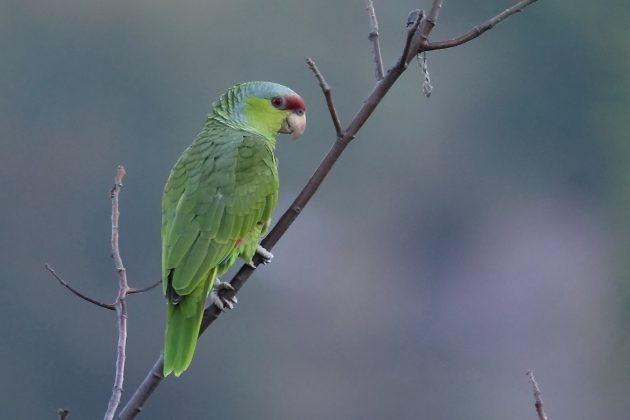
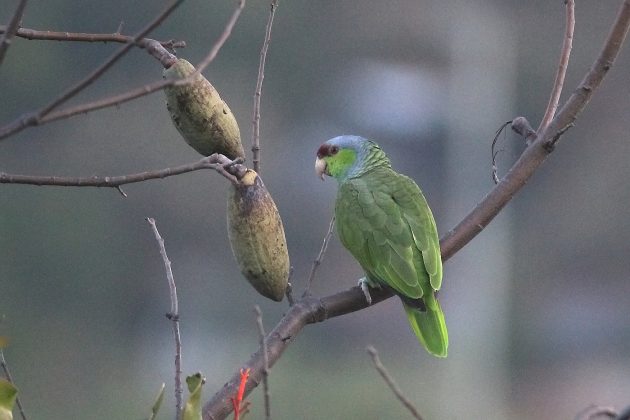
It wasn’t until I started doing a bit of research for this post that I experienced, as we say in Mexico, sentimientos encontrados — contradictory feelings, combining joy and sorrow. Wikipedia told me that half of all the parrots in the world live in cages. Now that’s a depressing fact. I also discovered that exactly half of Mexico’s 22 parrot species are in danger of extinction within a few years. The Lilac-crowned Amazons we observed are considered endangered, although not yet critically endangered.
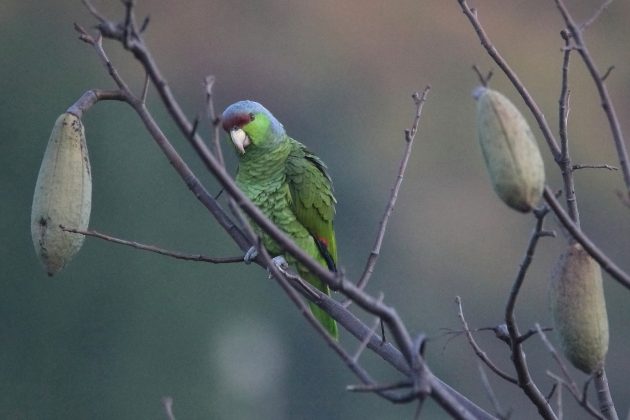
The reasons for the decline in Mexico’s parrot population have evolved over the years. In the 60s, 70s and 80s, massive numbers of Mexican parrots were poached and smuggled into the United States. Once this trade was suppressed, poaching continued to feed a growing market within Mexico itself. This trade has also now been mostly suppressed via publicity campaigns. But habitat destruction continues to endanger the country’s remaining parrot population.
(On a personal note, these facts help explain why, in my years of birding in Mexico, I have only seen 7 of the country’s 22 species.)
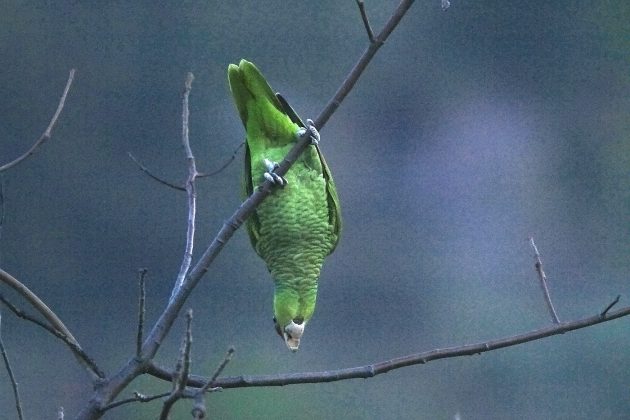
Since photos don’t provide enough context to judge size, I’ll mention that Lilac-crowned Amazons are over a foot long (33 cm).
And yet, there is a curious side effect to this history. During the 70s and 80s, released Mexican (and South American) parrots began to establish self-sustaining populations in cities of California, Arizona, Texas, and Florida. The most extraordinary example of this involves a close relative of the Lilac-crowned Amazons we observed on Monday. Northeastern Mexico’s Red-crowned Amazons may now only number around 1,000 birds in their native range. And yet, estimates of the population of Red-crowned Amazons in southern California go as high as 5,000 individuals. Another healthy population can now be found in southern Texas. It has often been observed that the survival of wild parrot populations may someday depend on the reintroduction of these urban birds.
I should mention here that last year several of my birding buddies and I observed another endangered parrot, the Yellow-headed Amazon, in our target town of Paso Ancho. Both of these Amazons include coastal Michoacán in their range.

Just enough photo to confirm the ID of this Yellow-headed Amazon. These parrots are a bit larger, 37 cm.
So were these Amazons escaped or released pets, or did they occur naturally in Tzitzio and Paso Ancho?
Paso Ancho is 1000 m (3,300 ft.) high, and a good 400 km (250 miles) from the ocean. But the Río Balsas basin, on whose edge the town can be found, is an odd habitat. For several species, it is the only basin where their range extends far inland. I have repeatedly seen Mangrove Cuckoos there, as well as one sighting of a Black-bellied Whistling Duck; in theory, both species should be limited to the coast in western Mexico. So we could not rule out our lone Yellow-headed Amazon having made its way there naturally. In eastern Mexico, this species can occur far inland, and at a considerable elevation.
The case of our Lilac-crowned Amazons was even more intriguing. This parrot’s range has always been limited to Mexico’s Pacific coast. However, it has been seen from sea level to 2,000 m (6,600 feet) near that coast, so Tzitzio’s 1,500 m elevation is not a dealbreaker. More importantly, we saw four parrots all moving as a group. It seems unlikely that these would all be escaped cage birds, especially in a town with less than 10,000 inhabitants. (However, I would not rule out their being the offspring of a pair of escapees.) At the very least, they seemed to represent a small naturalized or native population, in a habitat similar to, and quite close to, their official range. That fact gives me a bit of hope for the future of these lovely birds.
One thing that struck us was that these birds were moving through the very center of the town, with lots of cars and people moving near the tree on which they perched, very calmly. Could that indicate that they were once pets? I wish there were a way to know.
As usual, I will throw in a few photos of other lovely birds that we saw that day:
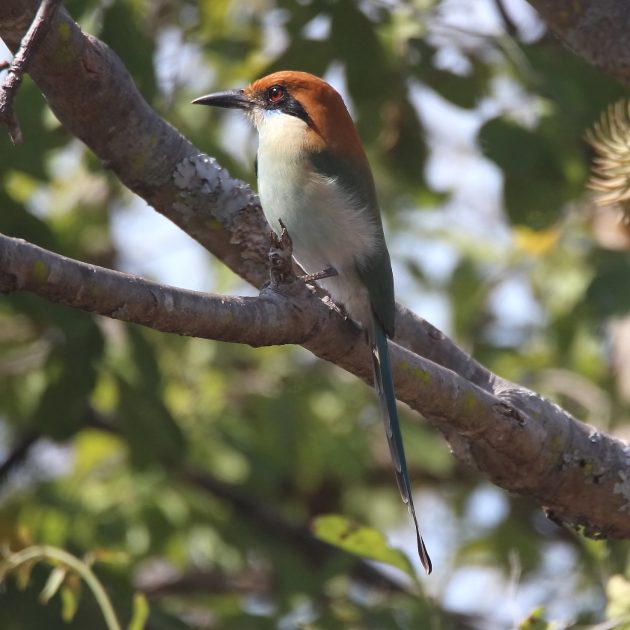
My guests were excited to see our local Russet-crowned Motmots, which are different from the Motmots they enjoy on the Yucatán peninsula.
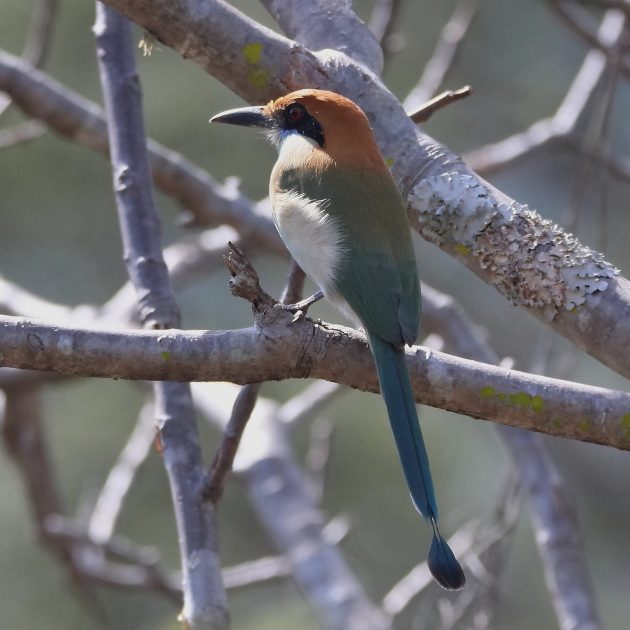
We got a nice view of their specialized tail feathers.
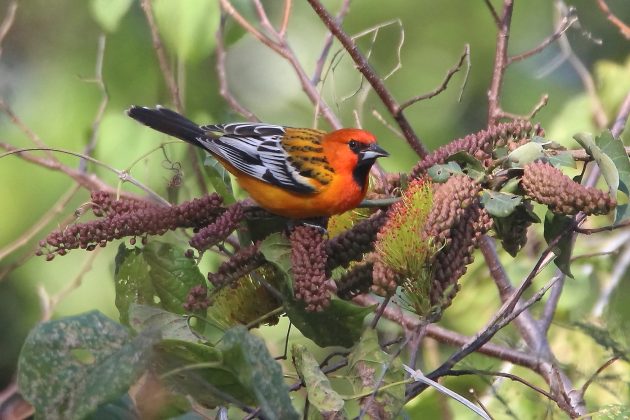
The light was great for a shot of this Streak-backed Oriole.
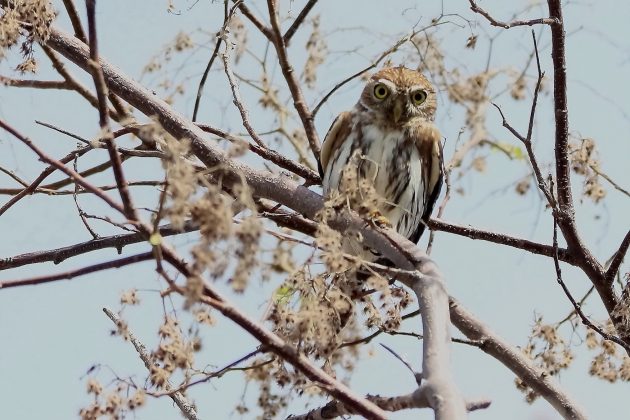
It wouldn’t be a trip to Paso Ancho without an encounter with a Ferruginous Pygmy-Owl.
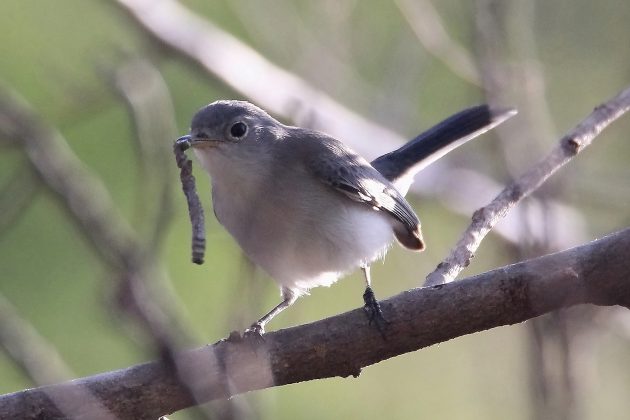
Blue-gray Gnatcatchers are exceedingly common winter birds. But you can’t always see them feeding on… what is that, exactly?
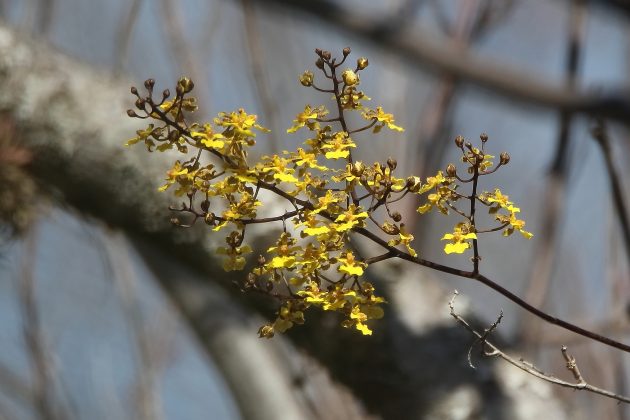
It’s always surprising to find orchids blooming wild in the semidesert thorn forest.







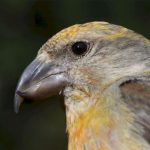





A parrot a day keeps the shrink away!